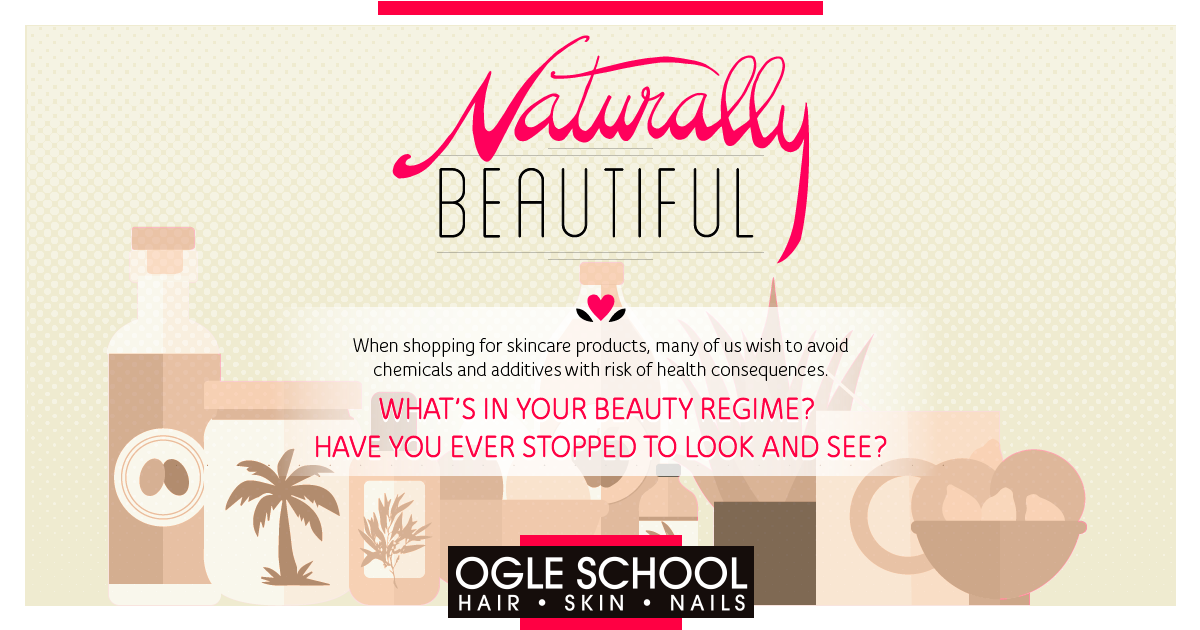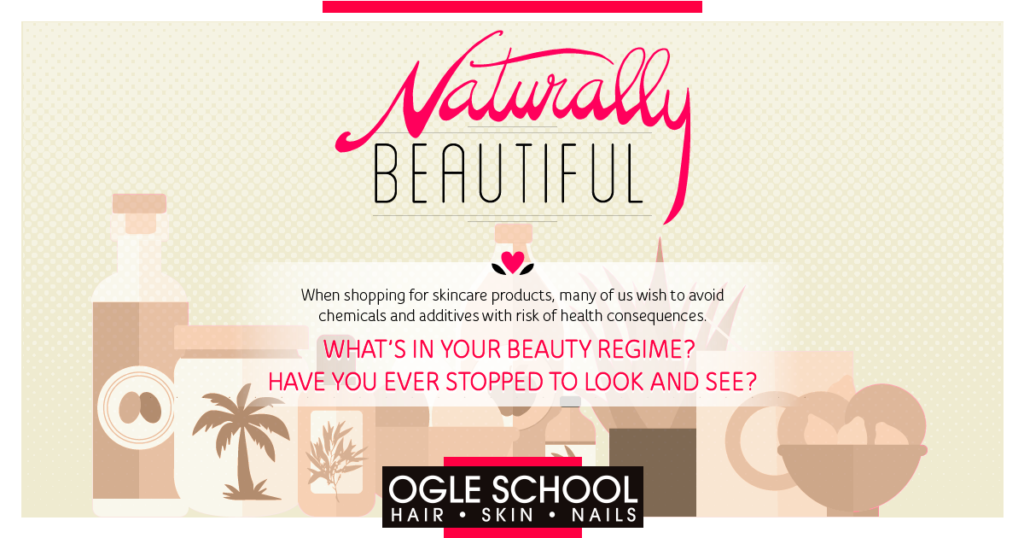
When shopping for skincare products, many of us make it a priority to to avoid chemicals and additives—for many reasons, with the primary likely an aversion to health consequences. That said, if you’ve never taken a look at your own beauty regime—do you know what is in the products you put on your skin, hair, nails, and body? Have you ever taken a few minutes out to investigate?
While we are not advocating alarm right off the bat, if you’re concerned about what you may be exposing yourself to, here are a few guidelines on how to navigate the often complex world of “natural” beauty products.

Place this Image on Your Site!
Simply copy and paste the code below and you can share this infographic on your site:
Be cautious of “organic” and “natural” labels
Beauty items are similar to food products in that they require regulation to gain an organic certification. However, terms can be tricky: “Natural” has no strict definition. Anything can be labeled “natural” without regulation.
The term “Organic,” however, does have measurably rigid stipulations: The federal government states that ingredients must be 95% organic. There are many ways to slither around this, though. For example, in many cases, the active ingredients—which pose the greatest potential for harm—actually make up 5% or less of the product. That means, in order to “game” the system, a product can be bloated with a non-reactive organic substance in order to gain the official organic stamp.
The takeaway here? Research all ingredients in your product before buying. Read on for details on how to do this effectively.
Study your “Chemicals 101”
When shopping for beauty products, a first step is to check the ingredient list, just as you would for packaged foods. The names may seem foreign and intimidating if you’re not familiar with them, but an easy way to navigate is to learn what you should avoid. Examine your products for the following common chemicals and additives in particular, as these are approved for limited use in the United States, but cannot be proven completely safe.
- Pthalates: These can disrupt endocrine function and are a possible carcinogen
- Parabens : These can act as estrogen in the body, leading to possible breast cancer.
- Aluminum chlorohydrate: This is a possible carcinogen and should be especially avoided if pregnant, as it is toxic to infants.
- Thimerosal: The mercury base of this chemical can cause kidney damage.
- “Antibacterials”: These soaps, cleansers, sanitizers, etc. can kill beneficial bacteria and aid along the development antibiotic-resistant super-bacteria
Finally, check the details
If you’re still confused, don’t worry. It takes time to become familiar with the many elements that compose the products we shop for every day, but there are lots of tools available to help.
Check the ingredients against the Environmental Working Group’s cosmetics database, which can give you valuable insight on what to green-light and avoid.
You’ll also want to consider the item’s packaging, as the container can harbor toxic elements itself. If the recycling code of the plastic container your product comes in is marked #3 or higher, that’s a sign there’s some bad stuff going on. (#1 and #2 are okay.)
A very easy way to filter out potentially troubling products is to use common sense. If a product stops you from doing something totally natural (such as sweating), it likely isn’t natural itself. Beware in particular of fragrances, as artificial fragrances are totally free of regulations forcing them to disclose ingredients. This doesn’t necessarily mean you will be affected, but because you don’t know what’s in the product, you don’t know how your skin will react!
And, although “organic” can be somewhat of an iffy designation, don’t make the mistake of discounting it completely. At the very least, the certification should keep you free from ingredients grown with pesticides and other toxins.
Still in doubt? Make your own!
Still wondering what products are best to use? There’s no better way to know exactly what is going into your beauty products than to simply make them yourself, for the ultimate in “natural” beauty!
If you have never considered making your own products, don’t be intimidated–the process can be as easy or involved as you wish. Numerous recipes and tutorials can be found online to create homemade versions of nearly any product you need.
A good place to start is arming yourself with a shopping list consisting of these multitasking ingredients, all commonly used in skin, hair, and nail care. Then stock your pantry and begin researching for recipes that suit your needs and preferences.
- Olive oil–for skin softening, soothing, shaving needs
- Coconut oil–also for skin conditioning purposes
- Tea tree oil–to soothe skin irritations and outbreaks, or as fragrance
- Baking soda–for whitening teeth, exfoliating, drawing out skin impurities
- Aloe vera–to tame sunburns and rashes
- Lemon and other citrus fruit–to bleach dark spots and exfoliate
- Eggs–For facial and hair masques
- Apple cider vinegar–for shiny hair, dandruff, rash treatments, brittle nails
- Eucalyptus–for aromatherapy
A caveat: One product you definitely do not to make yourself is sunscreen. DIY sunscreen rarely is effective, and you don’t want to mess around with highly damaging UV rays. In order to choose a more natural path with your sunscreen, choose a mineral rather than chemical-based sunscreen to avoid the “baddies.”
Now that you’ve educated yourself on what’s potentially going into your beauty regime, take a little time, get to work, and get naturally beautiful on your own terms.
Sources
https://www.axs.com/
http://abcnews.go.com/blogs/lifestyle/2014/02/natural-vs-organic-how-food-labels-deceive/
https://www.ewg.org/skindeep/






Comments are closed.